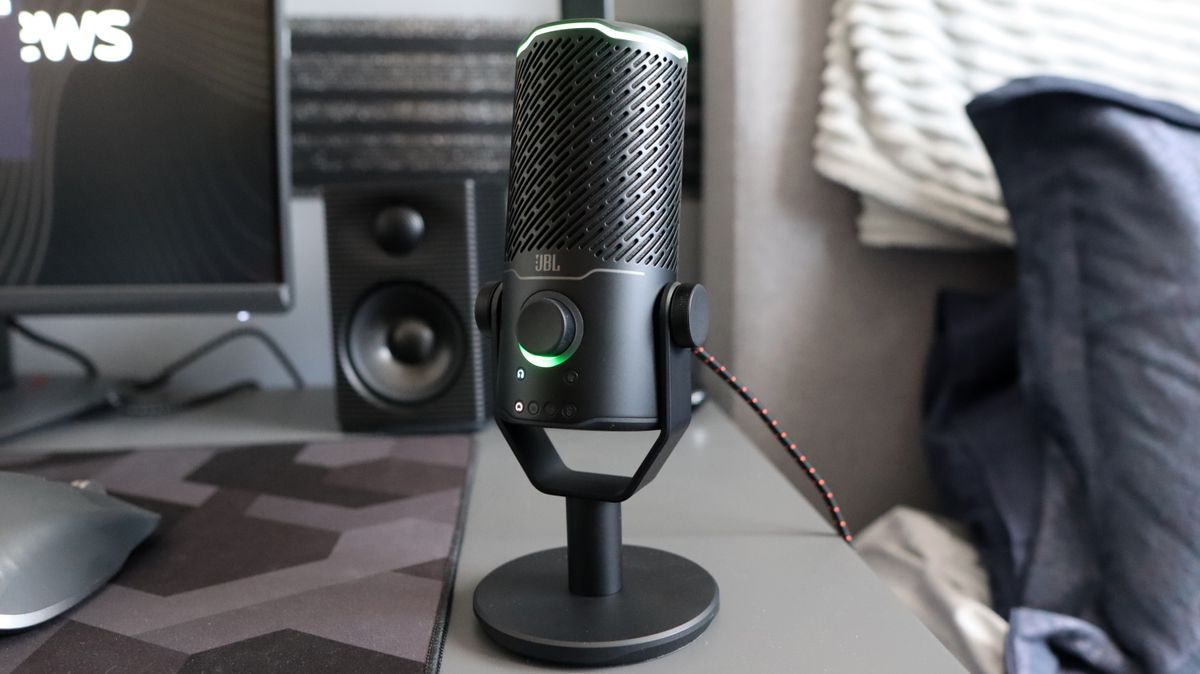Products You May Like
JBL Quantum Stream Studio: one-minute review
JBL may not be a brand best known for its microphones and streaming kit, but they are a hardy brand with an excellent reputation. The brand’s Quantum Stream Studio is one of its first stabs at a premium streaming microphone for you to shout into, and by and large, it’s a solid option that’s well-priced and specced. It looks great with an entirely integrated design and thoughtful touches such as an integrated mute button, on-board gain control with LED lights for gain and monitoring volume, and a choice of four polar patterns.
Elsewhere, the Quantum Stream Studio performs well with a clear, well-rounded pickup with both a fair bit of low-end and excellent clarity. Those four polar patterns make it versatile too, as it can be used for single-person recording, as well as in one-on-one interviews, or when recording in a group. Not many other microphones for streaming and gaming offer this function in 2024, so it’s a welcome addition to JBL’s option.
However, the Quantum Studio has a couple of shortcomings compared to more established options, such as its sub-par noise rejection. The software here, while functional, is also on the basic side, sticking with options also found physically on the microphone’s control panel, such as gain control and choice of polar pattern.
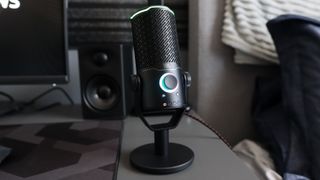
JBL Quantum Stream Studio: Price and availability
- $149.99 / £129.99 / AU$199.95
- Available in the US, UK and Australia
- Solid value for money
In the context of premium mics for content creators, streamers, and that kind of audience, the price tag of the JBL Quantum Stream Studio is decent and offers robust value. Against some of our favorite streaming microphones, JBL’s option retails for slightly more than the Blue Yeti in the USA, but identically in the UK, while also being comparable to options from audio giants Audio Technica and its AT2020 USB-X with its $149 / £116 price tag.
With this in mind, the Quantum Stream Studio is also much more affordable than premium choices such as the SteelSeries Alias, which goes for $179.99 / £179.99. In Australia, JBL’s mic becomes even better value than SteelSeries’ option, given its price is half – it’s AU$199.95 against the Alias’ AU$399. Across the board, the Quantum Stream Studio represents solid value for money with its feature set.
JBL Quantum Stream Studio: Specs
| Price | $149.99 / £129.99 / AU$199.95 |
| Polar pattern | Cardioid, bidirectional, omnidirectional, stereo |
| Sample rates | 44.1kHz / 48 kHz / 96 kHz / 192 kHz |
| Bit rate | 16 / 24 bits |
| Frequency range | 50Hz – 16kHz |
| Impedance | 16 / 32 ohms |
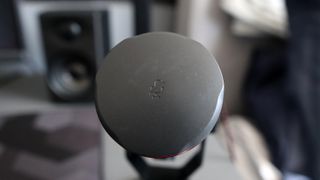
JBL Quantum Stream Studio: Design and features
- Sleek, cylindrical chassis
- Intuitive controls
- Simple connectivity and lighting
Compared to some of the more avant-garde designs seen more recently with microphones such as the SteelSeries Alias, the JBL Quantum Stream Studio sticks to something more conventional. Its main body is cylindrical, with a tall stature that carries presence when plonked on a desk, while there is a mute button on top and convenient controls on the front fascia.
The pop filter on the Quantum Stream Studio is integrated, meaning there aren’t any unsightly protrusions here, keeping JBL’s microphone looking clean. The chassis here is almost entirely metal too, exuding a high-quality finish that matches the price tag.
Elsewhere, JBL’s mic also comes with a small stand, which echoes the marvelous quality found elsewhere. It carries plenty of heft and keeps the Quantum Stream Studio in place well, although allows for some movement out of the box. This can be alleviated by tightening the dials on each side, as well as on the base. The underside of the stand also provides a strip of non-slip rubber to prevent the Quantum Stream Studio from sliding around unnecessarily on a desk. It worked well both on a desk and on my mousepad in testing.
The controls on the Quantum Stream Studio are wonderfully simple to use and easy to access, being contained on the front panel or on the top and bottom sides of the cylinder. The front panel is home to a dial, giving you quick access to gain control or monitoring volume if you’ve got headphones plugged into the mic’s 3.5mm jack on the back. You can also choose between a balance of the two by clicking the dial-in until it reveals a half-and-half pattern. The dial also has a small LED which can be used to monitor levels without trawling through software, which is nifty.
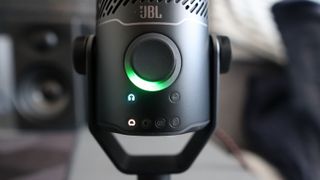
Also contained on the front panel are four white LED lights at the bottom which allow you to pick between the different polar patterns that the Quantum Stream Studio has, much like the Blue Yeti can do. These are accessed with a button on the bottom side of the mic, marked with a P. Click it in, and it’ll change the pattern with ease.
On the top of the Quantum Stream Studio’s chassis is a big mic mute panel, which operates as more of a pad than a button. Press on the mic mute icon, and the LED on the top changes from green to red, giving you a convenient visual indication that no one can hear you. You do have to be quite precise with your finger placement to ensure the microphone mutes, as pressing anywhere but directly on the mic mute icon does nothing.
The back side is home to a USB-C port for connectivity, as well as that 3.5mm jack for monitoring. Interestingly, the Quantum Stream Studio itself doesn’t have a thread mount for putting elsewhere other than the desktop mount. However, the base of the desktop mount unscrews for putting into a standard boom arm mount. Nifty.
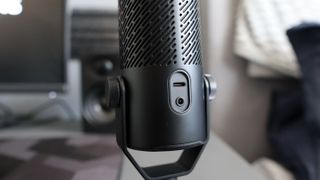
JBL Quantum Stream Studio: Performance
- Clear, full-bodied pickup
- Versatile with four pickup patterns
- Basic software configuration
Out of the box, the Quantum Stream Studio offers reasonably solid pickup with decent clarity and body. The default cardioid pickup pattern is best suited for vocals and instruments and provides good comms in both chatting with friends over Discord, in-game chats on Counter-Strike 2, and when testing in Audacity for recording my own dulcet tones.
The initial thesis with the cardioid pickup pattern is that with it picking up noise solely from the front, it should reject noise from the back and sides. However, at least in this pattern, the noises of my custom mechanical keyboard a few inches away from the back of the microphone were picked up. The distinct lack of any form of noise cancellation or rejection is a shame, especially when other premium streaming microphones offer much better performance in this particular area.
The other polar patterns are less useful for individual recording, but they are useful if you’ve got multiple people involved to huddle around one microphone. The omnidirectional pattern means the Quantum Stream Studio will pick up sound from all directions, making it ideal for podcast recording with a singular microphone. It essentially opens up the soundstage, and isn’t the best for single-person recording, picking up a lot more background noise.
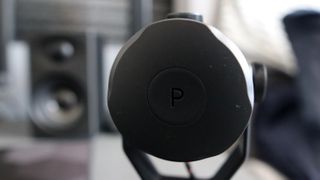
There’s also a bidirectional pattern, where the microphone captures inputs from the front and back – ideal for one-on-one interviewing. This option did a solid job of isolating noise elsewhere than the front and back in testing. The final pickup mode is arguably the most interesting, as the Quantum Stream Studio has a stereo mode, which can be used for recording instruments or if you’ve got two people on the same side of the microphone.
The mic’s software comes in the form of the Windows-only JBL Quantum Engine, which installs automatically when you first plug the Quantum Stream Studio in. As opposed to offering a plethora of customization with its own mixer, as SteelSeries’ GG does, the Quantum Stream Studio’s software is a bit more basic.
Quantum Engine allows for on-the-fly adjustment of the levels of gain and monitoring, as well as allowing you to choose the polar pattern. You can also customize the color of the lighting for the mic’s built-in level indicator which shows around the volume wheel on the front so you know you can be heard without being too loud. Otherwise, that’s pretty much it, apart from a cool graphic of the mic’s outline itself which rotates around in the bottom right corner.
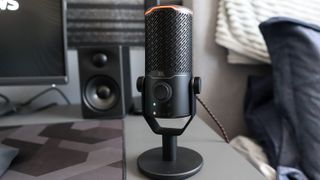
Should I buy the JBL Quantum Stream Studio?
Buy it if…
Don’t buy it if…
Also consider…
If you’re still not sold on the JBL Quantum Stream Studio, here’s how it stacks up against two similar options.
| Row 0 – Cell 0 | JBL Quantum Stream Studio | Blue Yeti | HyperX DuoCast |
| Price | $149.99 / £129.99 / AU$199.95 | $129.99 (around £100 / AU$180) | $99/about £80/AU$140 |
| Polar pattern | Cardioid, bidirectional, omnidirectional, stereo | Cardioid | Cardioid, omnidirectional |
| Sample rates | 44.1 kHz / 48 kHz / 96 kHz / 192 kHz | 48 kHz | 44.1 kHz / 48 kHz / 96 kHz |
| Bit rate | 16- / 24-bit | 16-bit | 24-bit |
| Frequency range | 50Hz – 16kHz | 20Hz – 20kHz | 20Hz – 20kHz |
| Impedance | 16 / 32 ohms | 16 ohms | 32 ohms |
How I tested the JBL Quantum Stream Studio
I used the JBL Quantum Stream Studio as my main microphone for two weeks. I tested it with both Audacity for test recordings, as well as when chatting with friends over Discord and in games such as Counter-Strike 2 for in-game chats. I also made sure to install the additional software to best test its functionality on Windows.
First reviewed June 2024.
